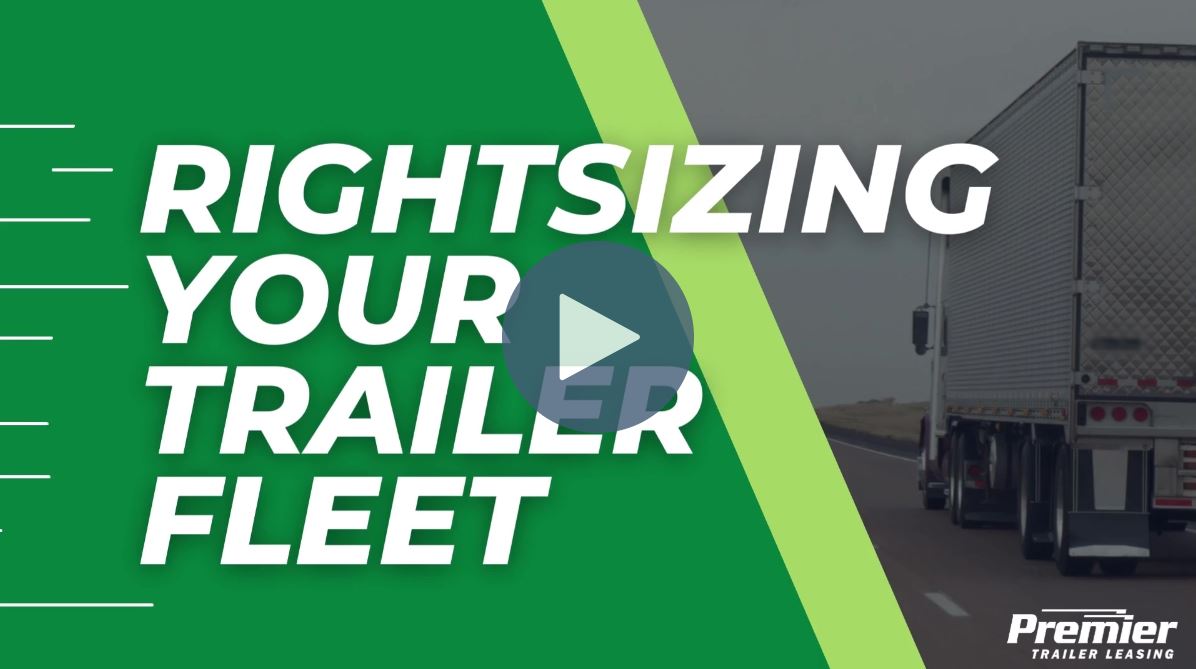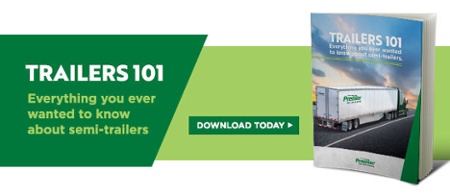By Bill von Kessel, Vice President & General Manager at Premier Trailer Leasing
Truckers know that no day is the same as yesterday, and tomorrow will be different again. The economy goes up and down. Seasons change shipper demand from quarter to quarter. Storms and other natural disasters disrupt shipping patterns. Supply chains clog and strain logistics planning. Shipping contracts come and go. Trucks and trailers break down, creating emergency response situations. Employees (including drivers) get sick or quit, producing labor shortfall challenges ... and on and on.
You name it! The variables for what to expect in the days, weeks, and months ahead are almost unlimited.
With all this uncertainty, how does an essential service business like trucking plan for the proper number of trailers to meet daily customer demand and maximize operational productivity? The answer is that sizing your trailer fleet and striking the right balance between owning, leasing, and renting requires a combination of understanding and evaluating your customers’ needs, your market segment characteristics, and general industry trends that affect utilization.
The Three Strategic Options
To properly size and balance your trailer fleet, there are three basic options you can employ. They are:
- Buying/Financing
- Leasing, and
- Rental
Before we dig into the pros and cons for each of these options,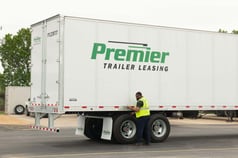 let’s first acknowledge that every carrier’s criterion and formula for success is unique. For-hire carriers’ operational needs differ from private carriers. Temperature control carriers differ from TL dry van carriers. TL carriers differ from LTL carriers, and so on. Even carriers in the same trucking segment have different geographical issues, shipper profiles, required trailer specifications, and unique seasonal demands.
let’s first acknowledge that every carrier’s criterion and formula for success is unique. For-hire carriers’ operational needs differ from private carriers. Temperature control carriers differ from TL dry van carriers. TL carriers differ from LTL carriers, and so on. Even carriers in the same trucking segment have different geographical issues, shipper profiles, required trailer specifications, and unique seasonal demands.
There is a lot to consider, but this article is intended to provide a fundamental approach to addressing trailer capacity and mix in most situations. Let’s begin with a review of the three options for adding trailers to your fleet.
Buying/Financing
Your first option is to buy and/or finance all the trailers you need 100% of the time. For private carriers, this may mean 90-100% of their trailers, less their highly seasonal business requirements. For for-hire carriers, this may be more like 70-80% of the trailer fleet, depending on the cyclicality and seasonality of their unique customer requirement mix.
Leasing
Long-term leasing (e.g., two years or more) can be appropriate in many situations.
- Financing without financing: This involves growing your fleet with OPM (other people’s money) in combination with or in lieu of purchasing your trailers.
- Balancing your balance sheet: This involves freeing up capital for other priorities.
- Complimenting shipper contact terms: This involves meeting trailer capacity expectations for the duration of specific shipper contracts.
- Regular model upgrades: Long-term leases (such as 3-5 years) let you cycle newer trailers into your fleet without the headache of trading or selling your used assets.
Renting
Renting involves daily, weekly, or monthly leases for terms of fewer than 365 days. Trailer rentals are typically month-to-month.
- Surge capacity: Rentals are perfect for sudden increases in shipper demand with unknown durations.
- Emergency requirements: These involve temporary substitutions for lost, stolen, or damaged assets.
- Seasonal fleet size adjustments: Every freight market has its ebbs and flows (more on seasonality below).
- Temporary storage: Older trailers and/or marine containers are perfect for on-site, mobile storage in all kinds of circumstances.
Universal Trends to Consider
Deciding the best mix of these acquisition options at any given time involves weighing industry trends as well as unique market circumstances.
The Economy
On the one hand, U.S. gross domestic product has nearly doubled between 2000-2022, underscoring a strong upward trend for the nation’s economy and freight in general. On the other hand, this growth has not been without bumps in the road along the way (e.g., the 2007-2010 “Great Recession”). The cyclicality of the economy from 1993-2021 and its close correlation with annual new trailer production is shown clearly in Figure 1 below.
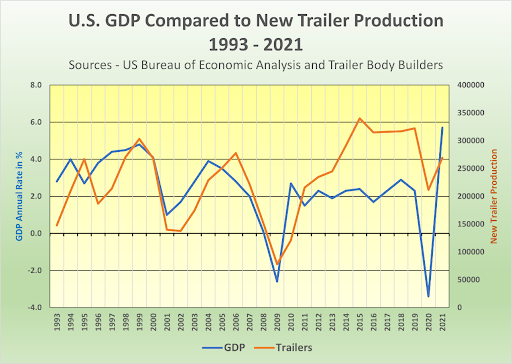 Figure 1
Figure 1
During these economic cycles, all businesses ride the demand curves up and down. As highly capital-intensive businesses, trucking companies are particularly vulnerable to recessionary risk. Idle equipment during a downturn quickly turns your trailer fleet from an asset to a cash-draining liability. Obviously, no one wants to get caught in that kind of helpless “down draft” during a business recession, so equipment investment strategies that minimize the risk of overextending your fleet size are key to operational and financial sustainability.
Seasonality
In addition to economic cyclicality, truckers also need to deal with seasonality in shipper demand. Although this seasonality can vary widely based on the industry segment and specialization of each carrier, there are traditional quarterly patterns to shipper demand and annual truck tonnage in general. Figure 2 shows a classic example of this annual freight demand rhythm.
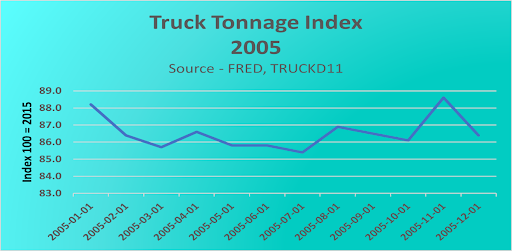 Figure 2
Figure 2
Note the first demand peak around the end of Q1 and the second larger peak at the end of Q2. Both are relatively minor compared to the huge pre-Christmas surge beginning in Q3 and unwinding in late Q4.
Not every year shows the traditional seasonal profile as dramatically as this example. Variations include:
- The timing of pre-Christmas inventorying can begin as early as July or August.
- The typical quarterly peaks tend to flatten out in periods of rapid expansion or contraction of the economy such as entering or leaving a recession.
- Pent-up demand left over from the 2007-2010 Great Recession has dampened quarterly peaks on general freight for most of the last decade.
- The growth of online shopping and returns has increased Q1 tonnage dramatically in recent years.
Regardless of the exceptions and variations, the seasonality of freight is an important consideration for every carrier in their trailer fleet capacity planning.
Natural Disasters
Earthquakes, fires, floods, hurricanes, tornadoes, blizzards, ice storms, and so forth! While it may seem that these kinds of events are generally on the rise, no one can accurately forecast or anticipate how and where they will occur with certainty, or sufficiently in advance, to minimize the logistical and humanitarian consequences to the trucking industry. Preparing for the unexpected includes having the ability to add or shrink trailer capacity quickly.
New or Used Trailer Availability
As the post-COVID-19 shutdown period has emphasized, carriers can’t always get trailers when they want them. Even today, with record freight demand driving carriers’ expansion desires, lead times for new trailers are long and prices have skyrocketed. Used trailers have been virtually nonexistent for years before COVID-19 and continue to be few and far between.
As shown previously in Figure 1 above, demand for new trailer production closely follows the ups and downs of the economy and GDP. However, when we compare the same new trailer production with the overall growth of freight measured by annual truck tonnage (Figure 3), you can see that demand for new trailer production is chronically racing to catch up to the baseline growth of freight tonnage.
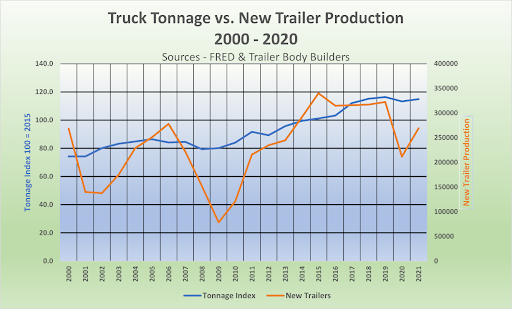 Figure 3
Figure 3
Not to place blame for this behavior on either the new trailer OEMs or their customer carriers, but this graph shows that while orders drop in concert with the economy, freight tonnage continues its relentless climb.
It may be interesting to note that during this same 20-year time frame, the U.S. GDP has nearly doubled while the U.S. population has increased less than 20%. The point is that demand blips may come and go, but the sustained upward growth of the freight industry chugs on.
Unique Carrier Considerations
In addition to general economic and industry trends, it is important to quantify the carrier’s unique circumstances and requirements, including the following:
Customer Freight Patterns and Seasonality
Every industry and the shippers within each industry have different trucking needs. Understanding and planning for the patterns of your customer base are key to both trailer fleet sizing and customer satisfaction management.
Carrier Financials
The decision to buy, lease, or rent often comes down to how each carrier elects to manage its financial statements. What may be beneficial for some, may be wrong for others. Modeling the different options can help clarify the choices.
Maintenance and Operational Support
Some truckers have full shop capabilities in multiple locations. Others have fewer or none. The level of trailer maintenance and operational support each carrier needs varies widely but is a priority consideration in setting a balance and selecting a lease/rental partner.
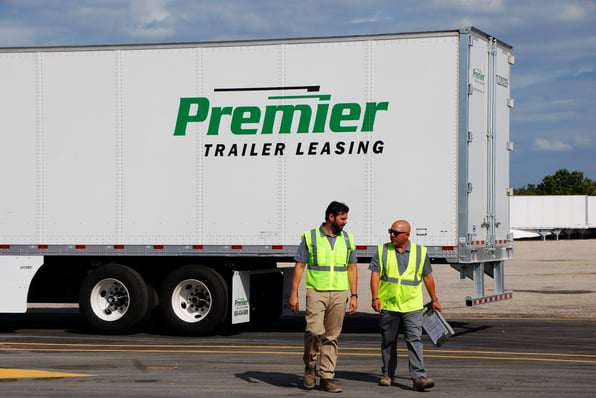
Road Service
While independent road service networks are available for carriers to use, rental/lease company road service programs in conjunction with conveniently located branches can provide important additional support for trucks and drivers away from home.
Trailer Specifications
How unique and specialized are your trailer specs? The more specialized the requirement, the more you may need to own your trailers. On the other hand, some rental and lease providers have a wider selection of models and specs that can help you fit your individual fleet needs.
Location, Location, Location
The distance between your facilities and any rental/lease trailer branch comes down to time and money. The more options you have and the closer those options are can make a huge difference to your bottom line.
Setting Your Strategy
With all these considerations and variables, how does a carrier set the right trailer fleet size and mix? Here are some rules of thumb to help guide your process:
- Establish your priorities: Methodically review, evaluate, and prioritize the considerations above and any others unique to your operation. Emphasize the top three priorities in your plan and outline the potential value proposition delivered by each.
- Think long term: Look beyond current events and forecasts to focus on long-term continuity and sustainability. Set specific performance targets. The need for daily operational goals is a given, but keeping your eyes on the target makes a bullseye more likely.
- Seek expertise and select the best possible partners: Reach out for expert input on your major challenges and priorities. Collect data and ask for referrals to determine the right fit with prospective supplier partners.
- Evaluate your strategy regularly: Review your plan routinely to benchmark its performance. Use clear metrics as much as possible and include your partners in the reviews.
Finally, we hope you will consider Premier Trailer Leasing as your principal rental/lease partner. With 36 locations nationwide and over 50,000 trailers in our fleet, Premier’s experienced team can help every step of the way. We are everywhere and everything you need us to be.

Bill von Kessel is Vice President and General Manager of Premier Trailer Leasing and an industry veteran. His 35 years of industry experience include branch operations, branch management and sales, truck dealership management and truck leasing management.

